Country Report: Poland
Poland's pharma industry, the largest in Central and Eastern Europe, confronts the fallout from the government's controversial 2012 Reimbursement Act.
This sponsored supplement was produced by Focus Reports.
Project Coordinator: Emilie Laumond
Editorial Coordinator: Teddy Lamazere
Project Assistants: Pablo Hernandez Romero Valerie Baia
Graphic Assistance: Nisha Albuquerque
Project Publisher: Julie Avena
To read exclusive interviews and more info, please log onto www.pharmaboardroom.com or write to contact@focusreports.net
POLAND: Unlocking Potential
We honestly feel like a member of the richest club of pharmaceutical countries," declares Igor Radziewicz-Winnicki, undersecretary of state at the country's Ministry of Health. Not only is Poland the largest pharmaceutical market in the Central & Eastern Europe region and the sixth largest in Europe (USD 8.1 billion in market value), it is also a hub for production and functional activities. With a GDP growth of 3 percent forecast by the OECD, and the first positive balance of trade in 2013 since its accession to the EU, there are also clear signs of economic momentum. However, Poland has some of the lowest prices of both innovative and generic drugs in Europe. At the same time, as cost containment measures keep the pressure on other European health authorities to reduce drug reimbursement expenditures, the Polish pharma industry is also struggling to deal with the pressure from its own 2012 Reimbursement Act while reasserting its positioning alongside the Big 5 Germany, France, Spain, Italy and the UK.

Photo credits: Kimba Kerner
THE REIMBURSEMENT ACT: REVOLUTION OR EVOLUTION?
"Cost containment measures are not just a Polish story, but a European reality," says Marcin Hanczaruk, general manager at Amgen. "The Reimbursement Act is a real revolution, but it has brought both benefits and shortcomings. One consequence is that Poland has the lowest average price of medicine in the European Union," adds undersecretary Radziewicz-Winnicki. In fact, the price of innovative drugs in Poland is 59 percent below the EU average and 43 percent for generics. Poland has historically been a branded generics market and still remains today with 62.5 percent of Poland's market value and 88 percent in volume. "In 2008, the Ministry of Health predicted that by 2015 a gap would emerge between the cost of running the healthcare system and the contributions for health security," says PwC's healthcare sector leader for the CEE region Mariusz Ignatowicz. "In other words, for the first time, healthcare costs would be in excess of the National Healthcare Fund's resources." Poland's Ministry of Health decided to prepare for the future, with the aim of simultaneously improving healthcare access, and bringing more innovative drugs to the market. However, the result was very different indeed.
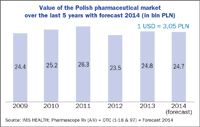
Value of the Polish pharmaceutical market over the last 5 years with forecast 2014 (in bln PLN)
"With this new 2012 legislation, the situation for patients has deteriorated, as well as that of the industry, doctors, hospitals, pharmacies, distributors, and wholesalers," says Zdzislaw Sabillo, founder and CEO of PBA, a Polish consultancy. "At the same time, copayment has risen, from 36 percent to 40 percent today; but this is only for reimbursed products. However, the total copayment for the whole pharmaceutical sector is at 60 percent." PwC's Ignatowicz adds: "The natural question then is, if they saved this much money, shouldn't it be spent on innovative therapies or in the introduction of drugs that have been waiting years for reimbursement? Such reinvestment has happened to a very limited extent." Indeed, the state budget could earn as much as PLN 5 billion (USD 1.6 billion) by 2015 from the cuts, which has not been reinvested in introducing more innovative drugs.

Igor Radziewicz-Winnicki, Under Secretary of State at the Ministry of Health
"Despite the fact that the Polish environment has changed significantly, access to innovation is still challenging," says Marynika Woroszylska-Sapieha, general manager at Sanofi and president of the board of INFARMA. "This is not because Poland cannot afford innovation but rather because there is no recognition of the value of innovation. INFARMA, the association representing innovative companies in Poland, has been acting since the beginning to change the perception of innovation."

Marynika Woroszylska-Sapieha, General Manager, Sanofi Poland
The government is aware of this situation but has many other issues to resolve. "Our biggest priority is to counteract rising waiting lists. Polish society must overcome the burden of health inequality. We believe that a rationalization of health capacities, improved accessibility, availability and adequate health services are the tools needed to enhance the efficacy of our health system," remarks undersecretary Radziewicz-Winnicki. However, Michal Bichta, Merck's country manager in Poland, feels that there is still a long way to go before the industry and the health authorities are aligned. "I personally feel there is lack of long-term perspective in our discussions with health service authorities," he explains. "They are still very much driven by the here and now."
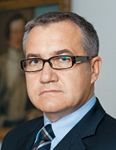
Zdzislaw J. Sabillo, CEO, PBA Consultancy
Although this dialogue is only a first step to bringing more innovation and more diversified care for patients, the road ahead is still winding. "In the end, real savings happen with a real revolution and it is not the one we are having right now," says PBA's Sabillo.
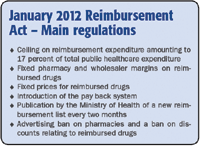
January 2012 Reimbursement Act â Main regulations
SURVIVAL OF THE FITTEST
With a declining Rx market and market access challenges, "companies have to develop new strategies and anticipate change to remain competitive," states IMS Poland's general manager Maciej Kuzmierkiewicz.

Michal Bichta, Country Manager, Merck Poland
Some multinational companies have implemented a three-leg strategy in Poland that has proven to be successful. "Diversifying our business has been essential to our success in Poland," says Sanofi's Woroszylska-Sapieha. "Before 2010, OTC represented 12 percent of our turnover, whereas today consumer healthcare (CHC), which includes OTC, accounts to 20-21 percent. Given these results, last year we were the fastest growing CHC company in the Polish market with 16 percent growth." In such a dynamic environment, the healthy level of diversification that Merck has attained is a critical factor for sustainable growth. Merck has built its nearly 300-year history on diversification. "Merck's market share in OTC, biotech and off-patent products in Poland are well balanced, and we know we can rely on them to outperform," says Merck's Bichta. "We believe this three-pronged setup gives us stability and flexibility in the short-term, making us less dependent on the business environment." Mathieu Fitoussi, country manager of Servier Poland, comments: "We are mostly present in the reimbursed segment; thus we have to diversify; and in the near future, we believe that the prescription non-reimbursed and OTC segments represent the best opportunities."

Mathieu Fitoussi, Country Manager, Servier Poland
Even for multinational generics players, diversification has been a must. "Actavis is a fully active branded generic company focusing on cardiology, urology, CNS, oncology, hospital products, and since the new Reimbursement Act was implemented, we also decided to move into OTC. Diversifying our business has been a great strategy, and even though OTC is still small, it is also our fastest growing segment at Actavis Poland today" says Izabela Zimmermann, general director at Actavis Poland.
"We are therefore investing our resources and capabilities to increase our portfolio in this area. At the moment we have 250 SKUs on the market, 80 molecules and each of our business units manage between 30 to 40 SKUs. These numbers give us credibility and the assurance that great things are still to be accomplished in Poland," she adds.
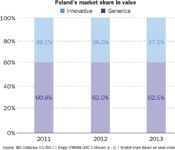
Poland’s market share in value
Bristol-Myers Squibb has taken another approach; focusing on specialty care with biopharmaceutical cancer research and a new treatment in immuno-oncology. "The goal of immuno-oncology is to change survival expectations and the way patients live with cancer," says Piotr Marciniak, general manager of BMS Poland. Their first immuno-oncology molecule for the treatment of advanced melanoma was approved in March 2014. "In line with our specialty care BioPharma strategy, we aspire to continue delivering the greatest value to customers and patients, with the highest standards of scientific excellence, business ethics and integrity," he adds.

Andrzej Sybicki, CEO, Novascon
ON YOUR MARKS, GET SET, OTC!
With an Rx segment under pressure from the Reimbursement Act, the OTC market was arguably the easiest and fastest option to obtain results. With a market value of PLN 8 billion (USD 2.6 billion), the OTC/dietary supplement market has been booming in Poland, with Aflofarm, USP Zdrowie and Polpharma the biggest market players. Self-medication rates in Poland are high, perhaps unsurprising given that one in every four TV advertisements is for drug promotion.
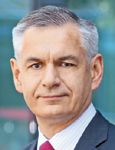
Ernest Bartosik, General Manager, Unipharm Poland
Novascon Pharmaceuticals and Unipharm are two of the fastest growing OTC companies in Poland with 37.8 percent and 28 percent of growth in 2013, close behind the leader Adamed with 39 percent (IMS data). Novascon is a Polish company, created in 2007 and specialized in the development and implementation of innovative dietary supplements and foods for specific medical purposes (FSMP). Andrzej Sybicki, founder and ceo comments: "We decided to focus on these two areas as it was the fastest way to develop and bring products to the market. With broad clinical trial availability in Poland and the possibility to choose the best active ingredients, we were able to develop high quality products, and register them to sell them in pharmacies."
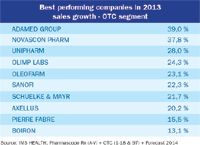
Best performing companies in 2013 sales growth - OTC segment
The competitive landscape has increased in this attractive market and finding the right approach is a must. "The OTC market, like other markets, has many entry barriers, and successful companies are the ones which provide new products and solutions and not copies of existing products," says Ernest Bartosik, general manager of Unipharm Poland. "To grasp these opportunities, it is key to master the marketing mix but above all understand the needs of consumers and doctors." Finding the appropriate niche and diversifying the portfolio has also been on the agenda of both companies. Novascon's Sybicki adds: "We are always looking for new opportunities and although dietary supplements and FSMP have a great deal of opportunities, being a real player in cosmetics and medical devices is our next challenge. At Novascon we look to develop any type of product that can be sold in pharmacies; this is our baseline."

Maciej Kuzmierkiewicz, General Manager, IMS Poland
POLISH GIANTS
Polpharma has been and still remains Poland's powerhouse and a role model for the domestic pharma sector. However, Poland's giant remains humble, and Rajmund I. Martyniuk, president of Polpharma Trade, still sees room for expansion: "Polpharma still has to develop its portfolio to meet current Polish healthcare needs, and this is why a few years ago we decided to invest in biotechnology and optimize our production network. Martyniuk also attributes the company's success in Poland to its "marketing and communication strategy, which has been tailor-made for doctors, nurses, pharmacies, distributors, payers, government and patients."

Izabela Zimmermann, General Director and deputy CEO, Actavis Poland
But Polpharma is not only a Polish story and is rapidly growing its international footprint. "We decided to enter markets with similar healthcare systems and business models to Poland. The companies we have acquired in Poland in recent years already had strong connections with CEE and CIS markets, so this is a good starting point for us and we plan to capitalize on this heritage." says Martyniuk. Certainly, Polpharma has the capacity and resources to become better recognized internationally in the years to come.

Piotr Marciniak, Country Manager, BMS Poland
MANUFACTURING – "I HAVE A DREAM"
"Poland has the means to become a recognized European hub and export platform," says Hendrik Venter, general manager at DHL Supply Chain. "Both local and international manufacturers are present and deliver the highest standards. We are seeing more pharmaceutical manufacturers looking at Poland as a regional hub for CEE rather than setting up individual CEE country warehouses. This allows them better inventory management, the ability to reduce working capital and to exercise better control over their supply chain."

Poland’s giants
Of course Poland still has challenges to meet: "Polish infrastructure is still in need of significant development and investment, particularly in the road network," he adds. But there might be a new positive trigger as new investment (overall European Union budget 2014-2020 of EUR 144 billion – USD 195 billion) is arriving to solve infrastructural issues and help the Polish pharma industry and manufacturers blossom. "In the previous budget perspective we had spent a large sum of money, about EUR 10 billion (USD 13.6 million), on capital expenditures for machinery and infrastructure," explains Jerzy Majchrzak, general director at the department of Innovation and Industry under the Ministry of Economy. "This time, up to 80 percent of the budget will be invested in research subsidization. We will also be subsidizing up to 51 percent of the development and engineering of production and installation construction." He goes on to highlight Poland's advantages as a manufacturer: "Poland has significant manufacturing capabilities which, along with a highly skilled and experienced workforce, allow us to specialize in the manufacture of medicines. Polish companies are leading the way with international co-operation in the pharmaceutical industry. Among multinational pharmaceutical companies that have manufacturing facilities in several countries, including Poland, the Polish plants usually perform best in terms of quality, cost-reduction, environmental impact minimization and so on."
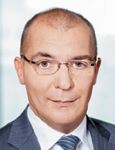
Rajmund I. Martyniuk, President of the Management Board & Polpharma Trade Office, Polpharma Group
With EU accession in 2004, Poland's manufacturing standards have kept on rising, with the Main Pharmaceutical Inspectorate, Poland's supervisory authority, verifying the quality of medicinal products, starting with manufacturing, through to import, distribution and retail distribution in hospitals and pharmacies. "Ten years have passed since GMP was introduced into pharmaceutical law in Poland," says Zofia Ulz, Poland's main pharmaceutical inspector. With over 200 manufacturers performing to the highest EU standards, plus qualified and affordable labor, Poland has a serious competitive advantage.
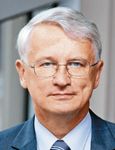
Jerzy Majchrzak, Director at the Department of Innovation and Industry
"The Polish market is dominated by generics in terms of volume," stresses Dariusz Nowicki, director at Polfarmed, the Polish Chamber of Pharmaceutical and Medical Equipment Industry. "This makes Poland the European leader in generic production – a position that will not change in the near future. Poland is prime real estate for drug production as we can sell high quality drugs at low prices. Our geographical location as a connection point between Eastern and Western Europe puts Polish companies in an opportune position to maximize the benefits of these international connections."

Hendrik Venter, General Manager, DHL Supply Chain
However, some see Poland's accession to the EU as a weak point for manufacturers in the long run. "What is worrying is that because of ever-stricter regulations targeting the pharmaceutical industry, costs are rising drastically to adapt to these new measures, but prices of drugs on the other hand are diminishing," states Cezary Sledziewski, executive director at PZPPF, the Polish Association of Pharma Industry Employers. "No one currently knows exactly how much these costs would represent but estimates indicate costs of EUR 48 million (USD 65 million) for Poland."
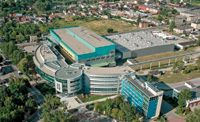
Polpharma manufacturing plant
Nonetheless, large multinational companies that invested in Poland in the 1990s are still here with their state-of-the-art manufacturing facilities and functional hubs and continue investing to serve the Polish market and export internationally. This is the case for GSK, Sanofi, Novartis, Servier, Valeant, Teva, Mylan and Nycomed "98 percent of the drugs that we sell in Poland are manufactured in Anpharm, a production and manufacturing site close to Warsaw, in Bialolenka," explains Servier's Fitoussi. "Anpharm was the first production site in Poland to receive the European GMP certificate. The Anpharm site is evidence of our commitment to Poland and a clear sign that we are here for the long run." GSK's Toczyski comments: "We are very proud of the state-of-the-art, global manufacturing facility in Poznan. The Poznan facility houses manufacturing and a massive multimarket warehouse which serves northern Europe. This facility produces many of our innovative products, which sell to over a hundred markets around the globe."

Anpharm, Servier production plant
PREPARING THE NEW POLAND
Poland has the means to work its way into the European spotlight with new encouraging possibilities in biotechnology, R&D and clinical trials. While Poland has shown impressive manufacturing momentum, it will have to develop these other areas to finally be recognized as a giant.
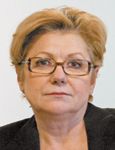
Zofia Ulz, Main Pharmaceutical Director
Director at the department of Innovation and Industry Majchrzak comments: "In recent times, we have seen the formation of a number of innovative pharmaceutical companies, including biotech and implants. These scientists have launched their startups, and now they are coming to the market. We have very high expectations for them." Indeed, some startups have blossomed in Poland and two great examples are Selvita and Mabion. "Local innovative companies such as Selvita have a significant role to play in Poland, and we believe that their entrepreneurial spirit, creativity and agility gives hope to the R&D segment in Poland," comments Merck's Bichta.

Dariusz Nowicki, Director, Polfarmed
Indeed this a good start. However, "the very fact that a 200-people team is the largest drug discovery team in a country with a population of 40 million is not something to be proud of," remarks Pawel Przewięźlikowski, co-founder and CEO of Selvita, currently involved in several research projects at the pre-clinical stage and working in the area of oncology and central nervous system. "Poland is still a sleeping giant, as we do not have a dozen companies like Selvita carrying out similar drug discovery programs. Poland needs to change if we want to operate on a more value-added level."
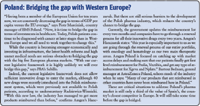
Poland: Bridging the gap with Western Europe?
Poland should be able to attract foreign investors because of many advantageous conditions to operate. "Poland has been a good environment to start up because of low-cost labor and many scientists who have the knowledge and experience of working in labs," says Maciej Wieczorek, founder at Mabion, a Polish biotechnology company developing and implementing specialized latest generation biosimilars.

Locations of the major investments
Poland has also shown promising signs in terms of clinical trials but according to Piotr Kolataj, senior director of clinical operations EMEA East Sub-Region, and country manager of Parexel Poland: "Countries like the Czech Republic, Hungary or Slovakia have a much higher number of clinical trials when calculated per capita. Poland has the potential to reach Hungarian or Czech proportions but we have to double or triple the number of clinical trials to reach this level of activity." However, "there is a great interest from pharma companies to enter the Polish market and to invest in clinical trials, especially within oncology and other chronic disease areas. I truly believe that Poland has the potential to develop the next generation of innovative drugs with international CROs offering consulting and clinical services to local clients," he adds.
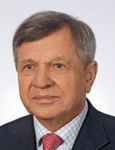
Cezary Sledziewski, Executive Director, PZPPF
The MNCs are paving the way in clinical trials and are not afraid to invest their resources in conducting them in Poland. "Our clinical center is our pride," says Bartosz Bednarz, general manager of AstraZeneca Poland. "Having this type of R&D investment in Poland is a real accomplishment."
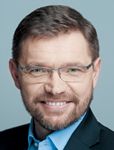
Bartosz Bednarz, Country President, AstraZeneca Poland
Praise for Poland's clinical trial capabilities pours in from all sides: "BMS's clinical trials center in Poland can be considered an important hub as we are covering six countries in the CEE region, including Russia and Turkey," says BMS's Marciniak; "Today we can prove that we are one of the best centers, with one of the highest recruitment speeds of medical staff," says Sanofi's Woroszylska-Sapieha; "Poland for Amgen is the second country worldwide in terms of clinical trial recruitment, just behind the US," says Amgen's Hanczaruk; "our International Center for Therapeutic Research (ICTR) is a hub for Poland and the CEE region," adds Servier's Fitoussi.

Malgorzata Adamkiewicz, CEO, Adamed Group
Adamed, the country's second largest local pharmaceutical company, has high hopes that it will soon develop its first innovative drug; clinical trials will then be conducted: "our goal therefore is to prepare and secure our IP and investigational new drug (IND) program to give us the possibility to start the first phase of clinical trials," comments Adamed's CEO, Malgorzata Adamkiewicz. "The future of Poland lies in biotechnology, however costly, risky, long to develop and unpredictable its results may be" says PZPPF's Sledziewski.

Pawel PrzewiÄźlikowski, CEO, Selvita
Irena Rej has been at the head of Farmacja Polska, the Polish pharmacy sector's chamber of commerce, for over twenty years, and has seen the market evolve over the years. "This is how we are in Poland: pessimistic realists looking for optimism," and perhaps what Poland really needs is more optimism, because CEOs across the value chain have signaled the great opportunities Poland offers and that they are ready to take Poland to the next level with the support of the government.
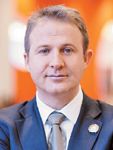
Maciej Wieczorek, President of the Board, Mabion & Celon Pharma
"Our country is experiencing many changes in the healthcare system and there are still many unmet medical needs that need to be addressed," says Actavis's Zimmerman. "The industry is aware of this and all it needs is the support from the government to help introduce new products as early as possible to meet these needs. Patients should not have to wait to be cured, especially when companies have the right products in their pipeline and are awaiting government approval. However, we believe that better things are coming and this is encouraging."
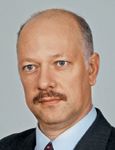
Piotr Kolataj, Country Manager, Parexel Poland
However, PwC's Ignatowicz believes that the future is less certain than it might at first appear: "Poland is facing two years of permanent political pulls. Right now with the European parliament election, the municipal election in autumn, the presidential election next spring, and the following autumn the parliamentary election. Hence, healthcare will be very high on the political agenda, and in which direction the development will go is very hard to predict."

Irena Rej, President, Farmacja Polska

.png&w=3840&q=75)

.png&w=3840&q=75)



.png&w=3840&q=75)



.png&w=3840&q=75)









